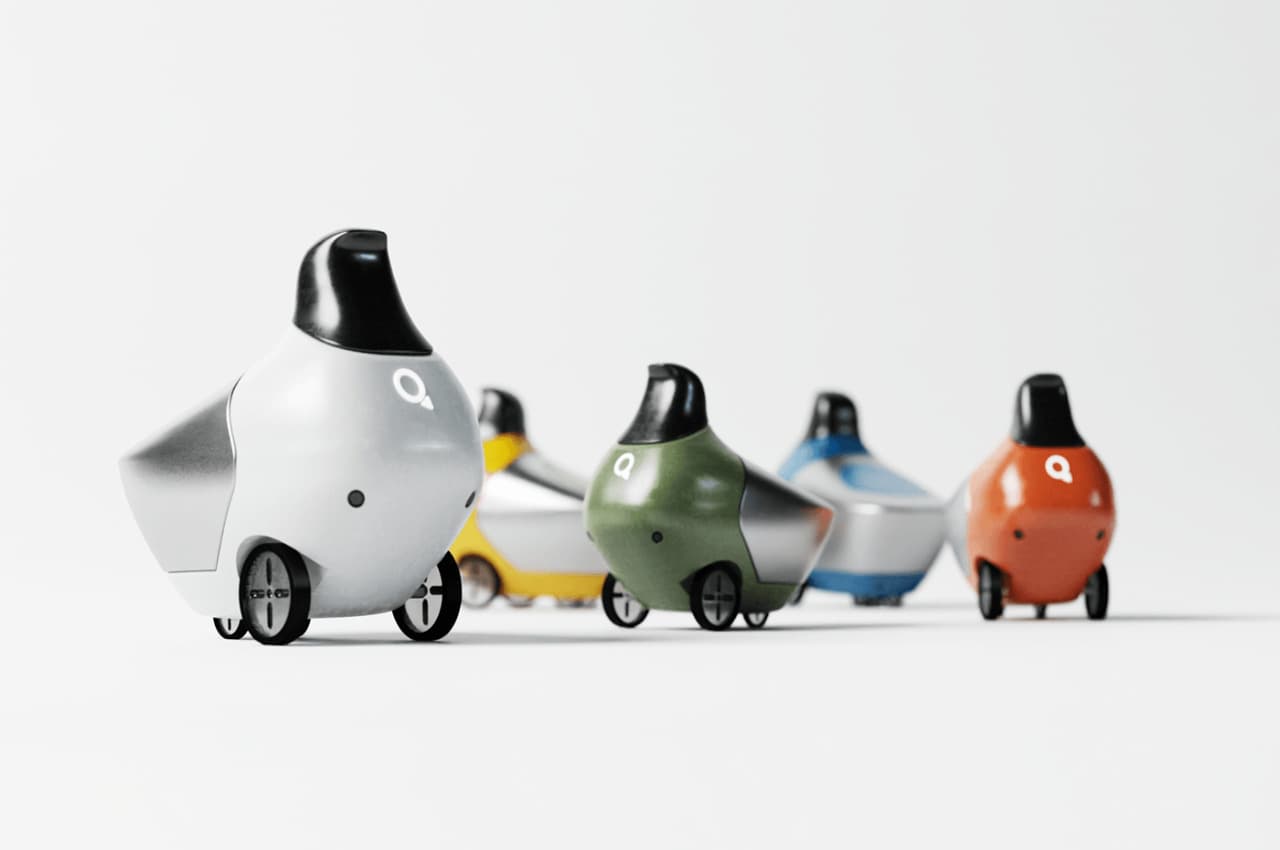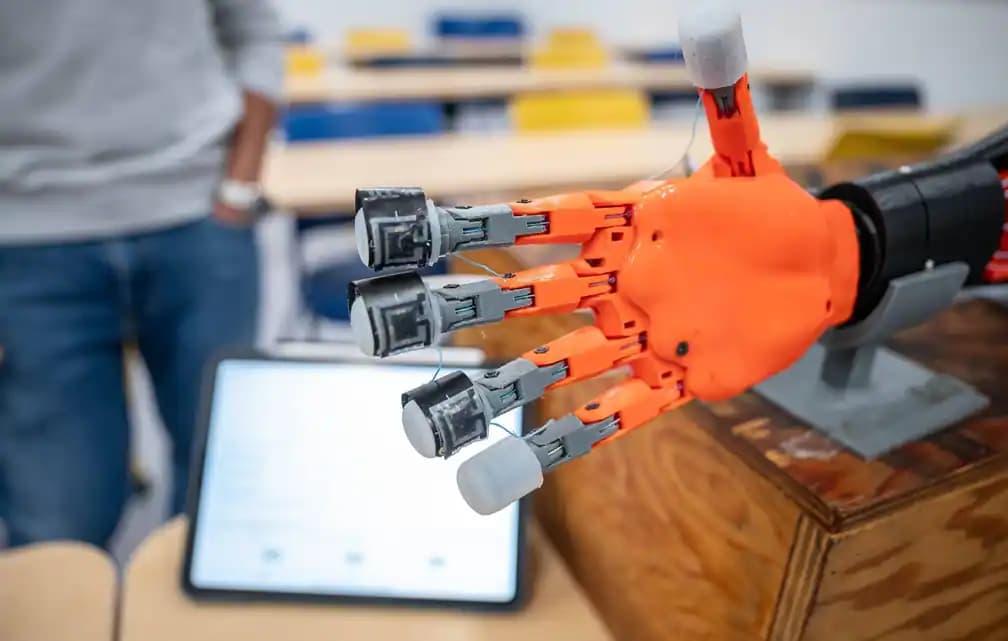

The Robotics Roundup is a weekly newspost going over some of the most exciting developments in robotics over the past week.
In today’s edition we have:
- DUCK LOOK-ALIKE ROBOTS WILL REVOLUTIONISE WASTE MANAGEMENT AND HELP YOU KEEP THE SOCIETY CLEAN
- Who do children trust more, robots or humans? Scientists found out
- NASA outlines plan to deploy burrowing ‘cryobots’ on icy moons of Saturn and Jupiter
- This robot skin could give machines a sense of touch
- Top Robotics Stories of 2023: IEEE Spectrum’s year in robots
DUCK LOOK-ALIKE ROBOTS WILL REVOLUTIONISE WASTE MANAGEMENT AND HELP YOU KEEP THE SOCIETY CLEAN

The Qua system is a bio-inspired and playful approach to smart waste management in urban environments. It consists of autonomous waste collection baskets that move independently throughout the city, approaching users when it detects the need for disposal. The robot’s design draws inspiration from the graceful movement of ducks, aiming to create a familiar and affable presence in urban environments. The system addresses the issue of littering by bringing waste collection directly to users, promoting responsible waste disposal practices and minimizing littering in public spaces. However, there is a concern that it may cater to laziness and compromise responsible behavior. Overall, the Qua system represents a groundbreaking approach to waste management, redefining the relationship between technology and urban living. The future of waste management may be shaped by innovations like Qua, where technology harmoniously integrates with the natural flow of city life.
Who do children trust more, robots or humans? Scientists found out

A recent study conducted by researchers at the Singapore University of Technology and Design (SUTD) examined how children aged three to five determine the trustworthiness of human and robot informants. The study found that children’s trust is influenced by an informant’s past accuracy, with children preferring to learn from sources that have been reliable in the past. Younger children were more likely to trust an inaccurate human over an inaccurate robot, while older children were more skeptical of unreliable informants regardless of whether they were human or robot. The findings suggest that children’s selective trust strategies may vary depending on their age and the cues they use to assess reliability. The study has implications for the design of educational tools and the incorporation of robots and AI in classrooms, highlighting the importance of perceived competence in building trust with young children.
NASA outlines plan to deploy burrowing ‘cryobots’ on icy moons of Saturn and Jupiter

NASA has outlined a roadmap for developing robotic systems to explore icy moons with water oceans. The roadmap focuses on “cryobot” missions, which involve cracking through the icy exteriors of moons like Europa and Enceladus to access the underlying liquid ocean. The workshop highlighted four key aspects to consider: power, thermal capability, mobility, and communication. The cryobots would require a nuclear power system to provide heat, along with a thermal management system to distribute heat and protect the bot from its own generated heat. The communication system would need to ferry data from the probe to a mother hub unit on the surface. While there are challenges to overcome, the feasibility of cryobot missions to search for life on icy worlds is increasingly promising.
This robot skin could give machines a sense of touch

Engineers from the University of British Columbia and Honda have developed a smart soft sensor that can improve prosthetics and enhance human-robot interaction. The stretchable and highly sensitive sensor can be applied to the surface of a prosthetic arm or a robotic limb, providing touch sensitivity and dexterity. It allows machines to perform tasks such as picking up soft fruit without damaging it. The sensor is made of silicone rubber and designed to buckle and wrinkle like human skin. It uses weak electric fields to sense objects and can detect forces applied to its surface.
Top Robotics Stories of 2023: IEEE Spectrum’s year in robots

2023 was a great year for robotics, with advancements in various fields. Some notable stories included the use of Roombas at the Amundsen-Scott South Pole Station, the development of robots to empower people with disabilities, the success of the Ingenuity Mars Helicopter, the acceptance of humanoid robots falling as a natural part of their learning process, the invention of a giant chopstick box manipulator by Dextrous Robotics, the competition between human and autonomous drones, Disney’s efforts to create emotionally engaging robots, Amazon’s work on solving the difficult problem of stowing items in warehouses, the success of the Avatar XPrize competition in combining human brains with robot embodiments, and the rise of humanoid robots with commercial potential. The future of robotics in 2024 looks promising, with potential advancements in humanoids, AI, and other areas improving our lives.